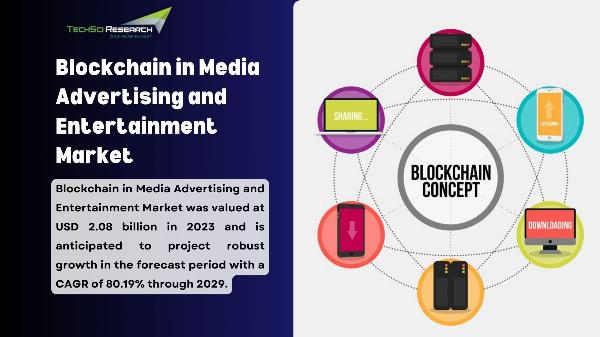 On-Page SEO Optimization – Fix Hidden Errors Killing Rankings!
On-Page SEO Optimization – Fix Hidden Errors Killing Rankings!
Getting Started with Blockchain Testing Services
Written by Arjun Sharma » Updated on: July 01st, 2025

The rise of decentralized applications (dApps), smart contracts, and blockchain-based platforms has revolutionized how data is stored, shared, and secured. But while blockchain offers inherent transparency and immutability, it also introduces a complex web of new testing challenges. From consensus mechanisms to cryptographic protocols, even the smallest misstep can compromise functionality, performance, or security on-chain.
That’s why blockchain testing services have become an essential part of the development lifecycle for Web3 platforms, enterprise blockchains, and DeFi systems. Unlike traditional testing, blockchain testing requires a deep technical understanding of distributed networks, transaction flows, smart contract execution, and security models, along with specialized tools and frameworks to validate every layer of the system.
Core Components of Blockchain Testing Services
Blockchain systems operate with unique architectural and operational characteristics, which require a specialized approach to quality assurance. Professional blockchain testing services combine domain knowledge with tailored methodologies to ensure each component, from smart contracts to network performance, is reliable, secure, and production-ready.
Here are the core components included in comprehensive blockchain testing:
1. Smart Contract Testing
Smart contracts are self-executing code that manages business logic on-chain. Errors in these contracts can lead to critical vulnerabilities or irreversible losses.
Key testing practices include:
- Unit testing of contract functions and logic
- Security testing for vulnerabilities like reentrancy, overflow, and front-running
- Gas optimization to reduce transaction costs
- Integration testing with dApps and external oracles
Tools commonly used: Truffle, Hardhat, Ganache, MythX, Slither
2. Functional Testing
This validates that the blockchain application behaves according to specifications, including:
- Transaction flows
- Data validation and state changes
- Permission logic
- Node-to-node interactions in the network
Functional testing ensures your platform performs as expected across real-world use cases.
3. Performance and Load Testing
Blockchain systems must handle concurrent transactions without bottlenecks or failures. Testing services simulate load to evaluate:
- Throughput (TPS) and latency under stress
- Consensus efficiency in high-traffic conditions
- Network propagation delays
- Scalability limitations
This is particularly important for enterprise blockchains and DeFi platforms handling large transaction volumes.
4. Security Testing
Security in blockchain is paramount due to the irreversible nature of transactions. QA teams test for:
- Cryptographic weaknesses
- Key management flaws
- Insecure APIs and integrations
- Unauthorized access or privilege escalation
- Vulnerabilities in consensus and peer-to-peer communication
Penetration testing and threat modeling are often integrated into the process.
5. Node and Network Testing
Since blockchain is inherently distributed, validating how nodes behave and communicate is critical. This includes:
- Testing node synchronization and fault tolerance
- Verifying node roles and consensus participation
- Ensuring resilience during node failures or attacks
6. API and Integration Testing
Many blockchain solutions rely on APIs to interact with external systems, dApps, oracles, and exchanges. Testing includes:
- RESTful or GraphQL API testing
- Data consistency between on-chain and off-chain systems
- Integration with third-party wallets or services
7. Compliance and Audit Testing
Especially for enterprise or regulated use cases, blockchain testing services ensure:
- Data integrity and auditability
- Regulatory compliance (e.g., GDPR, HIPAA, financial standards)
- Proper logging and traceability
Top Challenges in Blockchain Testing
Testing blockchain-based applications presents a unique set of challenges that go beyond traditional QA practices. These systems involve decentralized architectures, cryptographic algorithms, immutable data, and complex consensus mechanisms, all of which introduce high stakes and demand deep domain expertise. Below are some of the most significant challenges faced during blockchain testing:
1. Lack of Standardized Testing Frameworks
Unlike web or mobile app development, blockchain technologies are still evolving. There’s no universal standard for testing blockchain platforms, and each blockchain (e.g., Ethereum, Hyperledger, Solana) often requires its own tools, languages, and protocols. This fragmentation makes it harder for testers to maintain consistency and efficiency across projects.
2. Testing Smart Contracts Is High Risk
Smart contracts are immutable once deployed. A single undetected bug can permanently lose assets or open the door to exploits, highlighted by incidents like the DAO hack and various DeFi breaches. Testing smart contracts demands high precision, formal verification in some cases, and tools that detect vulnerabilities before launch.
3. Limited Test Environments
Unlike traditional apps that can be deployed in staging environments, blockchain applications run on distributed nodes across public or permissioned networks. Creating isolated yet realistic environments for load testing, forking testnets, or simulating complex consensus behavior is often difficult, especially without access to real-world transaction data.
4. Performance Testing Is Complex
Measuring performance in blockchain isn't as simple as checking response time. QA teams must account for:
- Block propagation speed
- Transaction finality
- TPS (transactions per second)
- Scalability of consensus under varying loads
Moreover, testing how nodes behave under stress, or when malicious actors attempt attacks, adds further complexity.
5. Debugging and Traceability Issues
Blockchain systems are decentralized and tamper-proof, but that also means traditional debugging techniques don’t apply. Once a transaction is written to the chain, it cannot be rolled back. Errors must be traced through logs, node communications, and blockchain explorers, making root cause analysis far more difficult than in centralized systems.
6. Ensuring Data Privacy and Regulatory Compliance
Blockchain is transparent by design, but enterprise use cases may involve sensitive or regulated data. Testing for compliance (e.g., GDPR’s “right to be forgotten”) becomes tricky when data is immutable. Testers must work with blockchain developers to ensure privacy-preserving design and proper encryption techniques are in place.
Why Partner with a Blockchain Testing Company
Collaborating with a specialized blockchain testing company gives your project a competitive edge by providing deep expertise, proven frameworks, and purpose-built tools.
Key benefits include:
- Expertise in smart contracts, consensus models, and token standards
- Access to private testnets and blockchain-specific tools like Truffle, MythX, and Slither
- End-to-end testing services, including functional, performance, and security testing
- Faster, risk-reduced deployments with fewer post-launch issues
- Scalable QA support through flexible engagement models
With the high stakes of blockchain development, a trusted testing partner helps ensure your platform is secure, reliable, and ready for real-world use.
Conclusion
As blockchain technology reshapes industries from finance to healthcare, ensuring the security, reliability, and performance of decentralized applications is more critical than ever. Traditional QA methods simply aren’t enough to meet the complex demands of distributed systems, smart contracts, and immutable transactions.
That’s where blockchain testing services offer specialized testing strategies, tools, and expertise to validate every layer of your blockchain solution. By partnering with a trusted blockchain testing company, you reduce risk, accelerate innovation, and build user trust from day one. Contact QASource to know more.
Note: IndiBlogHub features both user-submitted and editorial content. We do not verify third-party contributions. Read our Disclaimer and Privacy Policyfor details.
Copyright © 2019-2025 IndiBlogHub.com. All rights reserved. Hosted on DigitalOcean for fast, reliable performance.















